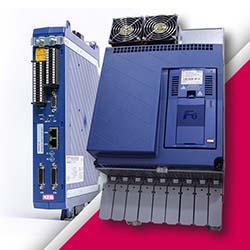EaaS essentially allows users to rent machinery for a fixed period or to meet other pre-determined outputs. These innovative pay-per-use or pay-per-unit-produced business models enable providers to develop customized, user-friendly solutions.
EaaS: A Catalyst for Today’s Manufacturing Challenges
Jessica Poliner, CEO and President | relayr
In today’s business landscape, industrial organizations are facing increased competition at a global level. Unpredictable market conditions make it difficult to increase sales of new machinery, creating little room for inefficient operations or foregoing untapped revenue streams. What has worked in the past, will not work going forward.
One such opportunity is transforming to Equipment-as-a-Service (EaaS). EaaS business models are becoming increasingly popular with industrial decision-makers to not only solve today’s problems but set organizations up for long-term resiliency and success.
Unlike a traditional model where manufacturers sell machinery, equipment, and production systems for a single, up-front cost, EaaS essentially allows users to rent machinery for a fixed period or to meet other pre-determined outputs. These innovative pay-per-use or pay-per-unit-produced business models enable providers to develop customized, user-friendly solutions that meet their partners' business goals.
Importantly, an EaaS model shifts regular maintenance, servicing, and responsibility for the equipment to the provider, altering the dynamic of the provider-customer relationship. The customer can fully concentrate on running their business on an operating expense (OPEX) basis rather than with costly capital expenditures (CAPEX). When utilized correctly, EaaS helps organizations protect against unpredictable market trends and achieve greater partner intimacy, among several other benefits.
Addressing Today’s Manufacturing Challenges
How, exactly, does the EaaS model address the hurdles manufacturing leaders are facing today? Take the challenge of increased global competition. Being able to provide EaaS to partners is an excellent way to differentiate in a crowded market. Machinery providers can better stand out in a competitive field with a unique, innovative offering.
Other challenges EaaS can help to solve:
-
Untapped revenue streams: EaaS provides a predictable and recurring revenue stream for providers. It also allows for data-driven improvements that positively affect all value-chain elements, including product development, customer service, operations, and logistics, helping to ensure additional revenue streams aren’t lost.
-
Inefficient operations: EaaS leverages IIoT (Industrial Internet of Things), with always-on, consistent monitoring of machinery. This connectivity makes it possible to offer predictive maintenance (PdM), indicating when a machine is likely to break down, what repairs should be made, and what parts need ordering well ahead of time to avoid inefficiencies.
-
Machinery not selling: Customers are also facing challenges in today’s market, and a large, up-front cost might not be possible for some. Instead of trying to sell machinery in a traditional model, consider how EaaS offers an alternative solution for customers. The CAPEX to OPEX switch makes it possible to sell equipment in a way that works for different customer needs and desires.
-
Needing to grow aftermarket services: The beauty of EaaS is that the customer does not disappear after a sale, only to get back in touch when something goes wrong. EaaS allows for maintaining customer intimacy—providers can be in tune with how customers use machinery and any customer needs that come up—helping to inform additional aftermarket offerings.
Best Practice for Implementing EaaS
If adopting EaaS sounds like the way forward, there are certain best practices and steps to take to unlock all its benefits.
While innovative technologies and solutions are great in today’s landscape, remember that business should drive the technology and not vice versa. According to research by McKinsey, many organizations embark on a digital manufacturing journey that cannot create enough value to justify its cost. Less than 30% of the companies participating in the McKinsey Digital Manufacturing Global Expert Survey had achieved a broader roll-out of their solutions after the pilot phase.
In relayr's research analyzing adoption of EaaS in the US manufacturing industry, it was determined that 76% of organizations that provide machines plan to undertake an EaaS-specific transformation or have already implemented one, while 81% plan to do so in the next 12 months.
Given those statistics, it’s important to develop a strategy that considers best practices and involves the entire organization to successfully move beyond the pilot phase. The transition to the EaaS model has an impact on all aspects of a business, including planning, research, development, manufacturing, marketing, sales, services, and more. That’s why it is essential to create a clear, thoughtful strategy to reap the benefits and avoid financial risks.
Here are some possible approaches:
-
Establish digital transformation as a CEO-driven agenda
-
Carry out a careful risk assessment
-
Calculate customer-specific price points based on a realistic analysis of the life cycle costs
-
Draw up contracts that take your customers' specific situations into account
-
Think big—external capital can help your organization focus on transforming the entire business model instead of focusing on single initiatives and pilot programs
Every organization is different and therefore every strategic implementation of EaaS will be different. Remember that the uniqueness of your business involves the unique people who are part of your organization. Therefore, your strategy must consider the people involved, both in terms of how you communicate your EaaS plan and how it’s executed.
It’s clear EaaS will transform the way industrial companies do business for years to come. With a strong implementation plan, it furthers many organizations challenges of today.

About Jessica Poliner
Jessica Poliner is the CEO and President of relayr, an Industrial Internet of Things company focused on solutions for risk-free digital transformations.
The content & opinions in this article are the author’s and do not necessarily represent the views of ManufacturingTomorrow
Comments (0)
This post does not have any comments. Be the first to leave a comment below.
Featured Product

